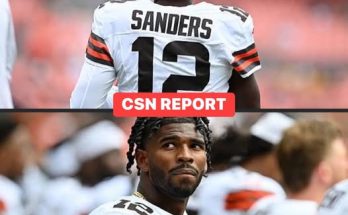The University of Alabama football program stands at a crossroads in 2025. For decades, the Crimson Tide has been synonymous with college football excellence, a perennial powerhouse that has defined greatness in the sport. But as the 2025 season unfolds, questions loom larger than ever: Will Alabama continue to roll toward championship glory, or has the Tide reached a plateau where “good” becomes the ceiling instead of greatness? This pivotal moment—the tipping point—could shape the trajectory of the program for years to come.
Alabama’s legacy is built on dominance. Under legendary head coach Nick Saban, the Tide claimed six national championships between 2009 and 2020, rewriting the record books and setting a standard few programs have matched. Saban’s departure after the 2023 season left a vacuum filled by his successor, and while optimism runs high, the stakes have never been higher. Maintaining excellence in college football is a relentless challenge, with every opponent gunning to dethrone the king, every recruiting cycle intensifying the battle for elite talent, and every game magnified by the expectations of fans and media alike.
At the heart of Alabama’s 2025 tipping point is the question of leadership. The current coaching staff, led by head coach and Saban protégé, faces the daunting task of carrying forward the program’s winning culture while adapting to a landscape that evolves rapidly. College football in 2025 is not the same as it was a decade ago. The transfer portal has reshaped roster building, NIL (Name, Image, Likeness) deals have transformed player motivations and recruiting dynamics, and a new generation of athletes demands innovation not only on the field but in player development and well-being. How Alabama navigates this new era will be critical.
Talent remains a cornerstone of Alabama’s success, but the margin for error is razor-thin. The Tide’s recruiting classes have continued to rank among the nation’s best, bringing in top-tier prospects year after year. Yet, translating raw talent into cohesive, championship-caliber teams requires more than just star power. It demands exceptional coaching, player development, and the ability to adapt game plans to maximize strengths and mask weaknesses. In 2025, Alabama’s roster showcases promise, but also questions. Will the offensive line provide the protection and run-blocking necessary to sustain a dominant offense? Can the defense regain its historic stinginess, particularly against high-powered offenses in the SEC and beyond? The answers to these questions will largely determine whether Alabama inches forward or makes a leap.
Another crucial aspect of the Tide’s tipping point is how the program handles pressure. The weight of Alabama’s legacy can be as much a burden as it is a privilege. Fans expect not just wins, but dominance. The media scrutinizes every decision, every game, every play call. Players feel the intensity both on campus and on the national stage. In past years, Alabama thrived under such pressure, using it as motivation to outwork opponents and execute with precision. But sustaining that mindset through coaching transitions and changes in college football’s broader ecosystem is no small feat. The program’s mental toughness and resilience will be tested like never before.
Competition in the Southeastern Conference remains as fierce as ever. The SEC continues to be the toughest conference in college football, with several programs on the rise seeking to usurp Alabama’s throne. Teams like Georgia, LSU, Florida, and emerging powers from Texas and Oklahoma ensure that every conference game is a battle. This environment means that even a slight dip in performance can result in losses that derail title hopes. For Alabama, winning the SEC remains an essential stepping stone to national championships. Thus, maintaining supremacy in the conference is part of what makes 2025 a tipping point.
The schedule itself offers both challenges and opportunities. Alabama faces a mix of traditional SEC rivals and non-conference opponents that test the team’s depth and adaptability. The opening games set the tone—strong early performances build confidence and momentum, while stumbles can sow doubt. The Tide’s ability to handle adversity will be scrutinized throughout the season. Injuries, unexpected losses, and the grind of a long season all factor into how this tipping point plays out.
Off the field, Alabama’s program is embracing the future. Investments in facilities, sports science, and player support are designed to give the Tide an edge in recruiting and development. Embracing technology and data analytics is part of the strategy to optimize performance and stay ahead of trends. The question is whether these investments translate into consistent on-field results or if they simply help maintain the status quo. The difference between greatness and good often lies in these details—the small margins of preparation, innovation, and execution.
Alabama’s fanbase remains among the most passionate in sports. The program’s success has bred a culture of high expectations, loyalty, and pride. This fan energy fuels the team but also adds pressure. In 2025, with national attention sharply focused on the Tide’s ability to reclaim or reinforce its elite status, the connection between the program and its supporters will be a vital source of strength. Maintaining that connection requires not only wins but an identity that fans can rally behind.
Reflecting on Alabama’s recent seasons, one can see hints of both promise and caution. The team has shown flashes of brilliance—moments where the offensive scheme clicks, the defense suffocates opponents, and special teams make game-changing plays. Yet, there have also been puzzling inconsistencies: close calls against less heralded opponents, struggles in late-game situations, or a lack of the dominant, intimidating presence that once defined the Tide. These nuances matter because they signal whether Alabama is still building toward greatness or merely surviving as a good team.
Leadership within the player ranks will also be pivotal. Veteran players, especially those in key positions like quarterback and linebacker, must step up as role models and clutch performers. The character and resolve of these players set the tone for the entire squad. Their ability to inspire teammates during tough stretches can mean the difference between a good season and a great one.
Looking ahead, the implications of the 2025 tipping point extend beyond this single season. Success now can build a foundation for sustained dominance, reinforcing Alabama’s status as a college football dynasty. Conversely, settling for mediocrity or “just good” risks eroding the program’s reputation and recruiting prowess, inviting rivals to close the gap or surpass the Tide. The program’s leadership is acutely aware that the margin between greatness and good is thin, and that this season represents a critical juncture.
Ultimately, the question of whether Alabama will roll to greatness or settle for just good in 2025 is a story of transition and resilience. It is about honoring a storied past while navigating an uncertain present and building toward a future. It’s about leadership on and off the field, about talent meeting opportunity, about a program’s identity under pressure. Alabama has faced tipping points before—times when the outcome was uncertain—and emerged stronger. This season, the Tide faces another pivotal moment, with the chance to reaffirm its place atop college football or to confront the harsh reality that greatness demands constant renewal.
As the 2025 season unfolds, all eyes will be on Tuscaloosa. The Crimson Tide’s journey will captivate fans, analysts, and rivals alike. The question isn’t just whether Alabama wins games; it’s whether the team reclaims the aura of greatness that made it a legend, or whether it settles into a role as a good but no longer great program. That tipping point is here—and the answer will define Alabama football’s legacy for years to come.



